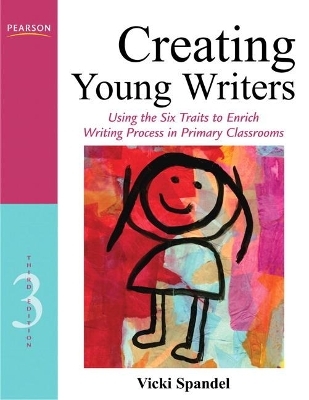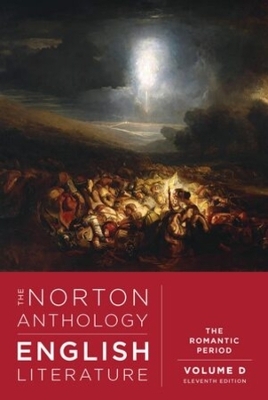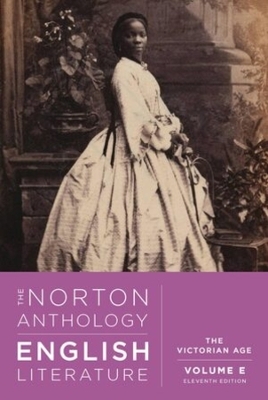
Creating Young Writers
Pearson
978-0-13-268585-6 (ISBN)
Here’s what’s new:
· NEW! All information pertaining to a given trait–rubrics, papers, lessons, and book recommendation–appears in one place.
· NEW! Primary writing guides have been revised to make assessment easy.
· NEW! Advanced writing guides for young writers who are ready are now included.
· NEW! Trait-inspired lessons systematically build skills in prewriting, drafting, revising, and editing.
· NEW! Brand new book recommendations include suggestions for linking reading and writing.
· NEW! New lessons specifically designed to make modeling simple and comfortable–even for new teachers.
· NEW! Each new sample paper has its own lessons to teach.
· NEW! Specific suggestions show how to make workshop and process work in your particular teaching style.
· NEW! New and expanded discussion questions and activities at the end of each chapter make this edition ideal for use as a classroom or study group text.
· NEW! Keys to Success suggestions embedded within each chapter help teachers make the most of every strategy or lesson.
Vicki Spandel has worked as a language arts teacher, researcher, editor, journalist, technical writer, and award winning video producer. In 1984, Vicki coordinated the 17-member teacher team out of Beaverton, Oregon, that developed the original, internationally recognized 6-trait model for writing assessment and instruction. Since that time, she has served as scoring director for more than 80 state, county, and district writing assessments, and has developed instructional writing materials for students K through college. She is a frequent visitor in writing classrooms, providing coaching on writing, revision, and editing. Vicki is the author or co-author (with Jeff Hicks) of more than 30 books for teachers and students, including Creating Young Writers, 2nd Edition (2008, Allyn and Bacon), The 9 Rights of Every Writer (2005, Heinemann), The Write Traits Classroom Kits, Grades 1 through 8 (Great Source Education Group), Write Traits Advanced, Grades 9 through 12 (Great Source), and most recently, Write Traits Kindergarten: Bringing the Traits to Kinderwriters (2008, Great Source). She lives with her family in the beautiful Three Sisters Wilderness area of Central Oregon, where she is currently working on several picture books.
Coming Face to Face with the Six Traits
Where Do the Six Traits Come From?
Creating a Vision of Success
It’s All About Language
The Six “Keys to Good Writing”
Ideas: The Message
Organization: Design
Voice: Fingerprints on the Page
Word Choice: Phrasing
Sentence Fluency: Rhythm and Flow
Conventions and Presentation: Preparing to Publish
Where Should I Begin?
CHAPTER 1 IN A NUTSHELL
STUDY GROUP: INTERACTIVE QUESTIONS AND ACTIVITIES
Coming Up
Setting the Stage
What does writing workshop look like?
In Judy’s Writing Workshop
Focus on Student Writers
Opening Lessons
Conferences
Sharing
It must be working
Connecting Traits to Writing Process
Planning
Drafting
Conferences
Sharing
Revising
Revising a Sketch
Revision Strategies for Young Writers
Editing
Publishing
Speed Week
Three Published Examples
CHAPTER 2 IN A NUTSHELL
STUDY GROUP: INTERACTIVE QUESTIONS AND ACTIVITIES
Coming Up
Tracking Down Ideas
Teaching Ourselves First
Teacher 6-Point Writing Guide
Primary Writing Guide
3 Parts to a Writing Guide Continuums: Another Way to View Writing
The Importance of Art
What to Look for–and What to Say
Looking Inside Writing
CHAPTER 3 IN A NUTSHELL
STUDY GROUP: INTERACTIVE QUESTIONS AND ACTIVITIES
Coming Up
Teaching Ideas within Writing Process
When do I teach the traits? How much time do I spend?
Which trait do I teach first?
5 Ways to Teach IDEAS
Teaching IDEAS Conceptually
Ideas as Imagination and Observation 87 n Ideas as Pictures in the Mind
Ideas as Messages
Ideas as “Something to Write About”
Lessons & Strategies for Teaching IDEAS
Modeling Suggestions for the Trait of IDEAS
Some of the Best Books Around for Teaching IDEAS
CHAPTER 4 IN A NUTSHELL
STUDY GROUP: INTERACTIVE QUESTIONS AND ACTIVITIES
Coming Up
Spotting Organization
Teaching Ourselves First
Teacher 6-Point Writing Guide for Organization
Primary Writing Guide for Organization
Continuum for Organization
What to Look for–and What to Say
Looking Inside Writing
CHAPTER 5 IN A NUTSHELL
STUDY GROUP: INTERACTIVE QUESTIONS AND ACTIVITIES
Coming Up
Teaching Organization within Writing Process
Why teach organization as the second trait?
5 Ways to Teach ORGANIZATION
Teaching ORGANIZATION Conceptually
Organization as Order
Organization as Grouping
Organization as Planning
Organization as Sculpting
Lessons & Strategies for Teaching ORGANIZATION
Modeling Suggestions for the Trait of ORGANIZATION
Some of the Best Books Around for Teaching ORGANIZATION
CHAPTER 6 IN A NUTSHELL
STUDY GROUP: INTERACTIVE QUESTIONS AND ACTIVITIES
Coming Up
on the Hunt for Voice
Teaching Ourselves First
Teacher 6-Point Writing Guide for Voice
Primary Writing Guide for Voice
Continuum for Voice
What to Look for–and What to Say
Looking Inside Writing
CHAPTER 7 IN A NUTSHELL
STUDY GROUP: INTERACTIVE QUESTIONS AND ACTIVITIES
Coming Up
Teaching Voice within Writing Process
Why voice matters
5 Ways to Teach VOICE
Teaching VOICE Conceptually
Voice as Metaphor
Voice as Individuality
Voice as Art
Voice as Mood
Lessons & Strategies for Teaching VOICE Modeling Suggestions for the Trait of VOICE
Some of the Best Books Around for Teaching VOICE
CHAPTER 8 IN A NUTSHELL STUDY GROUP: INTERACTIVE QUESTIONS AND ACTIVITIES Coming Up in Search of Word Choice
Teaching Ourselves First
Teacher 6-Point Writing Guide for Word Choice
Primary Writing Guide for Word Choice
Continuum for Word Choice
What to Look for–and What to Say
Looking Inside Writing
CHAPTER 9 IN A NUTSHELL STUDY GROUP: INTERACTIVE QUESTIONS AND ACTIVITIES
Coming Up
Teaching Word Choice within Writing Process
What are we teaching when we teach word choice?
5 Ways to Teach WORD CHOICE
Teaching WORD CHOICE Conceptually
Word Choice as Meaning
Word Choice as Weight
Word Choice as The Target
Lessons & Strategies for Teaching WORD CHOICE
Modeling Suggestions for the Trait of WORD CHOICE
Some of the Best Books Around for Teaching WORD CHOICE
CHAPTER 10 IN A NUTSHELL
STUDY GROUP: INTERACTIVE QUESTIONS AND ACTIVITIES
Coming Up
stalking Sentence Fluency
Teaching Ourselves First
Teacher 6-Point Writing Guide for Sentence Fluency
Primary Writing Guide for Sentence Fluency
Continuum for Sentence Fluency
What to Look for–and What to Say
Looking Inside Writing
CHAPTER 11 IN A NUTSHELL
STUDY GROUP: INTERACTIVE QUESTIONS AND ACTIVITIES
Coming Up
Teaching Sentence Fluency within Writing Process
What are we teaching?
5 Ways to Teach SENTENCE FLUENCY
Teaching SENTENCE FLUENCY Conceptually
Fluency as Dance and Rhythm
Fluency as Personal Poetry
Fluency as “Come Alive” Poetry
Lessons & Strategies for Teaching SENTENCE FLUENCY
Modeling Suggestions for the Trait of SENTENCE FLUENCY
Some of the Best Books Around for Teaching SENTENCE
FLUENCY
CHAPTER 12 IN A NUTSHELL
STUDY GROUP: INTERACTIVE QUESTIONS AND ACTIVITIES
Coming Up
Celebrating Conventions & Presentation
Teaching Ourselves First
Teacher 6-Point Writing Guide for Conventions & Presentation
Primary Writing Guide for Conventions & Presentation
Continuum for Conventions & Presentation
What to Look for–and What to Say
Looking Inside Writing
CHAPTER 13 IN A NUTSHELL
STUDY GROUP: INTERACTIVE QUESTIONS AND ACTIVITIES
Coming Up
Teaching Conventions & Presentation within Writing Process
What are we teaching?
5 Ways to Teach CONVENTIONS & PRESENTATION
Teaching CONVENTIONS & PRESENTATION Conceptually
Conventions as Customs
Conventions as Courtesy
Presentation as Packaging and Design
Lessons & Strategies for Teaching CONVENTIONS &
PRESENTATION
Modeling Suggestions for the Trait of CONVENTIONS &
PRESENTATION
Some of the Best Books Around for Teaching CONVENTIONS &
PRESENTATION
CHAPTER 14 IN A NUTSHELL
STUDY GROUP: INTERACTIVE QUESTIONS AND ACTIVITIES
Coming Up
assessing Young Writers Well
Three Levels of Assessment
Level 3: Large-Scale Formal Assessment
Level 2: Classroom Assessment
Level 1: Personal Assessment
Making Assessment All It Can Be
At the Large-Scale Level
Making Assessment All It Can Be
At the Classroom Level
The Dreaded Grades
Final Thoughts
CHAPTER 15 IN A NUTSHELL STUDY GROUP: INTERACTIVE QUESTIONS AND ACTIVITIES SOURCES CITED
Appendix Connection Between College- and Career-Readiness Anchor Standards for Writing and the Six Traits of Writing
Index
| Erscheint lt. Verlag | 29.9.2011 |
|---|---|
| Sprache | englisch |
| Maße | 216 x 275 mm |
| Gewicht | 790 g |
| Themenwelt | Schulbuch / Wörterbuch |
| Geisteswissenschaften ► Sprach- / Literaturwissenschaft ► Anglistik / Amerikanistik | |
| Sozialwissenschaften ► Pädagogik ► Berufspädagogik | |
| Sozialwissenschaften ► Pädagogik ► Schulpädagogik / Grundschule | |
| ISBN-10 | 0-13-268585-X / 013268585X |
| ISBN-13 | 978-0-13-268585-6 / 9780132685856 |
| Zustand | Neuware |
| Haben Sie eine Frage zum Produkt? |
aus dem Bereich


